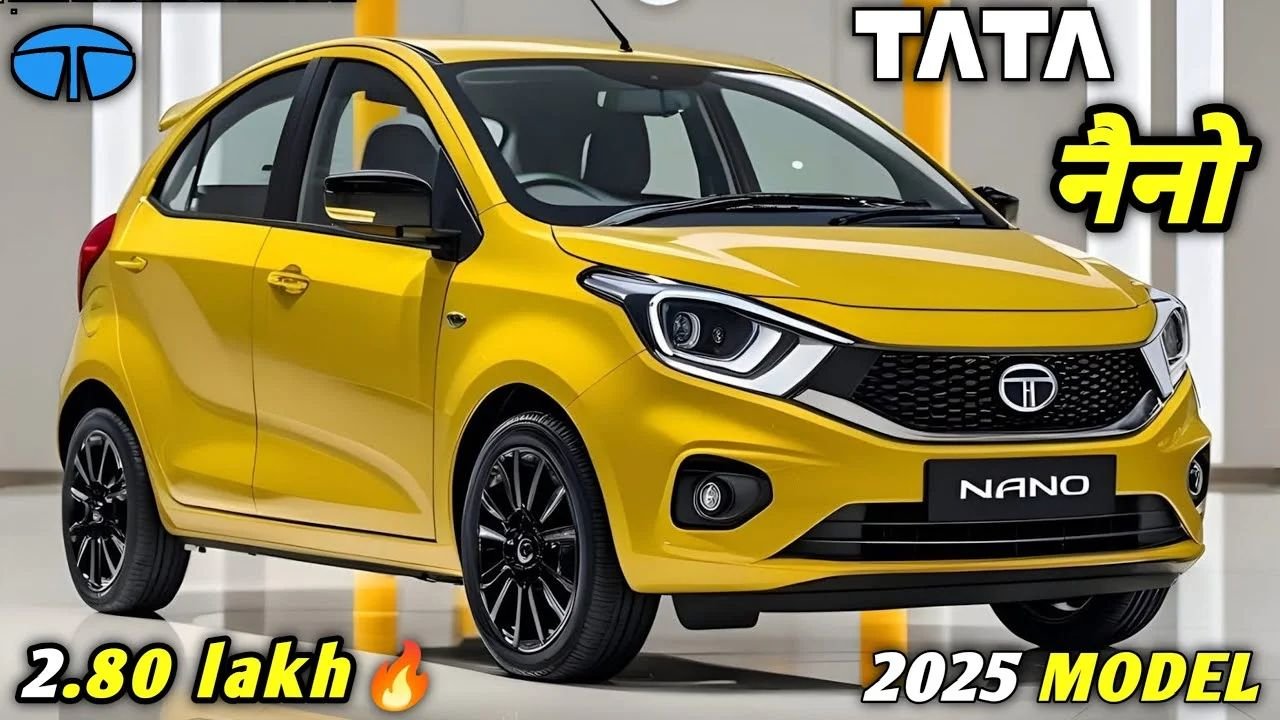When Tata Motors launched the New Tata Nano back in 2009, it created a huge buzz in India and around the world. Touted as the world’s cheapest car, the Nano was designed to be an affordable and practical solution for Indian families looking to move up from two-wheelers to a four-wheeler. While the car faced many challenges during its journey, the New Tata Nano still holds a special place in the hearts of many Indians as an iconic, budget-friendly city car. Let’s dive deeper into what made the Nano so unique and why it became such a landmark in India’s automotive history.
Why Did the New Tata Nano Capture Attention?
The biggest talking point about the New Tata Nano was its unbeatable price. At launch, it was priced at just about ₹1 lakh (roughly $2,000), making it the most affordable car globally. This pricing opened the doors for many Indian middle-class families to own a car for the very first time. Up until then, owning a car was often seen as a distant dream for many due to high costs. The Nano changed that narrative with its promise of “a car for every Indian.”
Besides the attractive price, the Nano’s compact size and low maintenance costs made it perfect for city driving. Easy to park and navigate through congested urban roads, the Nano was a practical vehicle for daily commuting.
Design and Space — Small But Thoughtful
Though small, the New Tata Nano was cleverly designed to maximize interior space. It comfortably seated four adults, although taller passengers in the back might feel a bit cramped on longer journeys. The Nano’s rounded and compact shape gave it a friendly, approachable look that appealed to many first-time car buyers. Weighing just about 600 kilograms, the lightweight build contributed to its excellent fuel economy and nimble handling.
The small turning radius meant it could easily slip into tight parking spots — a big plus in busy Indian cities where space is always at a premium.
Engine and Performance: Perfect for City Life
Under the hood, the New Tata Nano featured a small 624cc, two-cylinder petrol engine. It wasn’t made for speed but rather for efficiency and ease of use in city conditions. The top speed hovered around 105 km/h, which was adequate for urban roads but less ideal for highway driving or steep inclines.
Also Read – Maruti Suzuki Hustler Launched in Compact Size, Great Car Loaded with Premium Features
Its rear-engine, rear-wheel-drive layout was unconventional for Indian cars but helped save space inside the cabin. This design choice also gave the Nano a distinct identity, setting it apart from other hatchbacks on the road.
Fuel Efficiency: A Big Winner
One of the biggest advantages of the New Tata Nano was its remarkable fuel efficiency. Delivering an impressive 20-25 km per litre, it was among the most fuel-efficient petrol cars in India at that time. For cost-conscious buyers facing rising petrol prices, the Nano became a smart choice for reducing daily commuting expenses.
Features: Simple and No-Frills
To keep costs so low, Tata Motors had to limit the Nano’s features significantly. Early versions of the car came without air conditioning, power steering, or airbags — features that are considered essential in today’s cars. However, later models did add some basic amenities to enhance comfort and safety.
The New Tata Nano was never meant to be a luxury vehicle. It focused on providing reliable and affordable transportation with a straightforward design and minimal technology.
Why Did the New Tata Nano Struggle?
Despite its low price and practical benefits, the New Tata Nano faced several challenges in the market. Many buyers saw it as a “cheap” car rather than a smart, affordable one, which impacted its image negatively. There were also safety concerns after some reports of Nanos catching fire made headlines — issues Tata Motors quickly addressed with improvements.
As Indian consumers’ tastes evolved, they started preferring slightly larger cars with more features, and the Nano’s appeal diminished. By 2018, Tata Motors discontinued its production, marking the end of an era.
Is the New Tata Nano Still a Good Buy Today?
If you find a well-maintained used New Tata Nano, it can still be a practical choice for short city drives. Its compact size, easy maintenance, and low fuel consumption are strong points for budget-conscious commuters. However, its limited safety features and modest performance on highways mean it may not suit everyone’s needs today.
FAQs About the New Tata Nano
How many people can the New Tata Nano seat?
It comfortably seats four adults, though rear passengers may feel a bit cramped on longer trips.
What is the fuel efficiency of the New Tata Nano?
It offers an excellent mileage of about 20-25 km per litre, making it highly economical.
Is the New Tata Nano still in production?
No, Tata Motors stopped producing the Nano in 2018 due to declining sales.
Final Thoughts
The New Tata Nano was an ambitious and revolutionary project that aimed to democratize car ownership in India. While it didn’t enjoy long-term commercial success, it remains an important milestone in Indian automotive history. For many, the Nano symbolizes affordability, innovation, and Tata’s vision to make cars accessible to the masses. If you ever spot a New Tata Nano on Indian roads today, it serves as a reminder of a small car with a big dream — the dream of driving a car that was truly “for every Indian.”
Some Important Link
| Telegram Group | Click Here |
| WhatsApp Group | Click Here |
| Home Page | Click Here |










